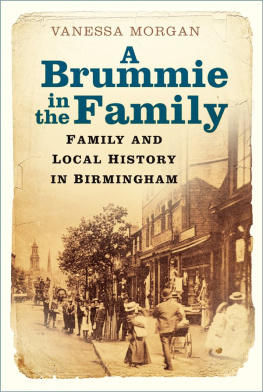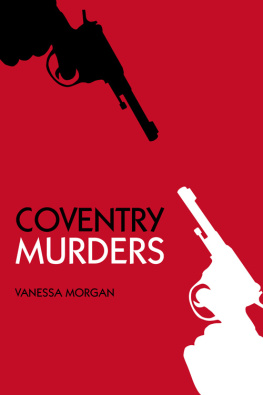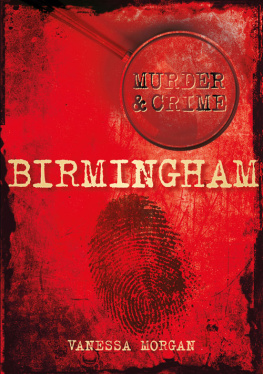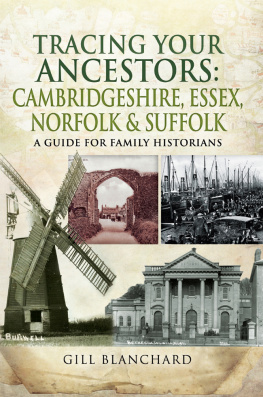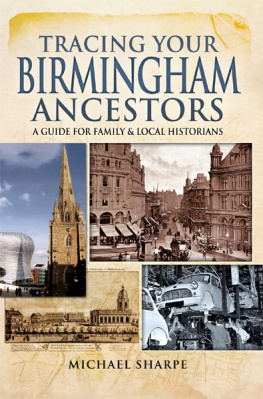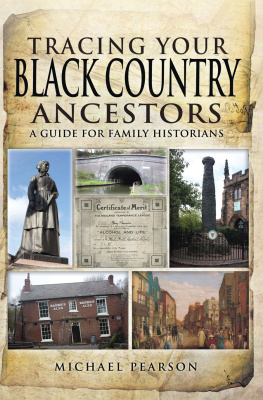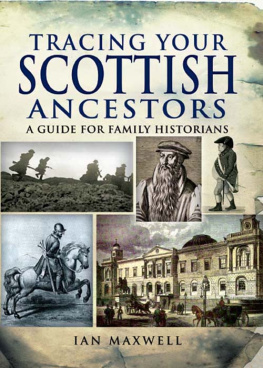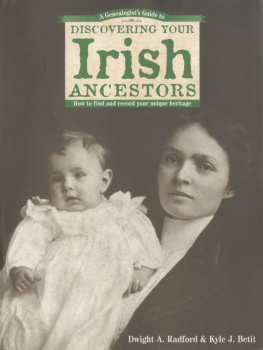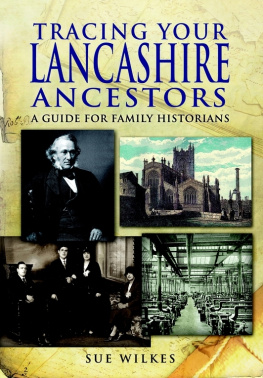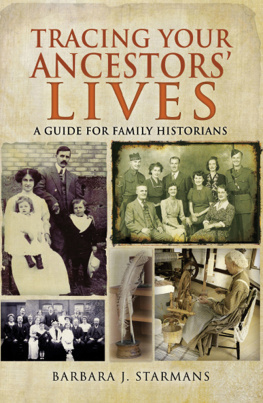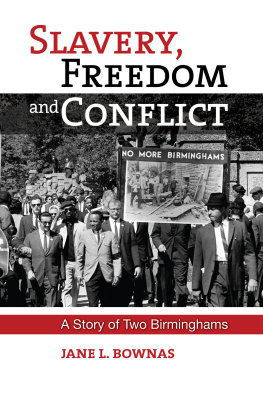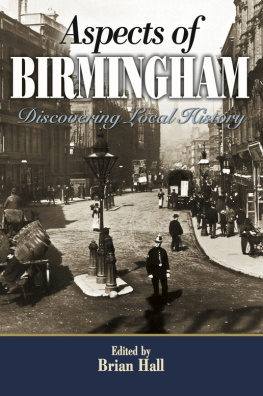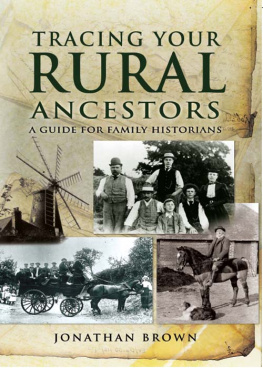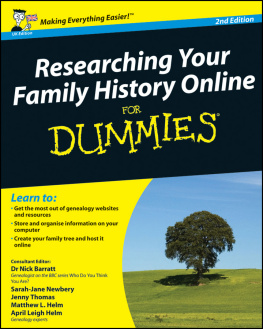Contents
Guide
A Brummie
in the
Family
Family and Local History in Birmingham
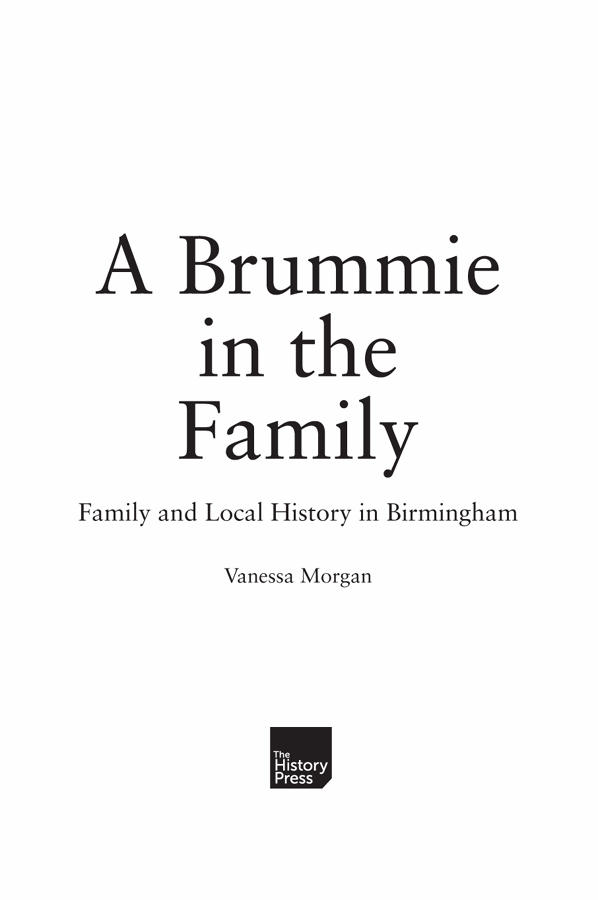
First published 2021
The History Press
97 St Georges Place, Cheltenham,
Gloucestershire, GL50 3QB
www.thehistorypress.co.uk
Vanessa Morgan, 2021
The right of Vanessa Morgan to be identified as the Author of this work has been asserted in accordance with the Copyright, Designs and Patents Act 1988.
All rights reserved. No part of this book may be reprinted or reproduced or utilised in any form or by any electronic, mechanical or other means, now known or hereafter invented, including photocopying and recording, or in any information storage or retrieval system, without the permission in writing from the Publishers.
British Library Cataloguing in Publication Data.
A catalogue record for this book is available from the British Library.
ISBN 978 0 7509 9756 0
Typesetting and origination by Typoglyphix
Printed and bound in Great Britain by TJ Books Limited, Padstow, Cornwall.

eBook converted by Geethik Technologies
Some fifty-odd years ago Dodds, a local comedian, used to sing:
Brumagen has altered so,
Theres scarce a place in it I know
Round the town you now must go
To find old Brumagem.
Had he lived till these days he might well have sung so, for improvements are being carried out so rapidly now that in another generation it is likely old Birmingham will have been improved off the face of the earth altogether.
Showells Dictionary of Birmingham (1885)

Old Square. Once found on the corner of Bull Street with Upper and Lower Priory, Old Square was swallowed up by the development of Corporation Street. (Authors Collection)
Contents
Acknowledgements
To tell the story of Birmingham I have found it, in places, more appropriate to use quotes from archival books written many years ago. In that way I am letting the people of the time tell their own story and showing what Birmingham was really like at the time.
One such writer, John Langford, explained in his A Century of Birmingham Life that he felt it would be more interesting and useful to let our forefathers speak for themselves, than tell their story in other words. So that is exactly what I have decided to do when describing some of the people and certain parts of the history of Birmingham.
Although there is a large section on How to do your Family History, this book is also very much a local history book, which will help you put flesh on the bones of your Brummie ancestors. Hopefully it will show who they were, what they did and how they lived.
So I would like to acknowledge the following that have been invaluable research tools for this book:
History of Birmingham by William Hutton (1783), plus various later editions including the updated version by James Guest, 1836.
A Description of Modern Birmingham by Charles Pye, 1818.
Pigots Directory, 1841.
Birmingham: History and General Directory of the Borough of Birmingham by Francis White & Co., 1849.
A Century of Birmingham Life (17411841) by John Alfred Langford, 1868.
Kellys Directory, 1872.
Personal Recollections of Birmingham and Birmingham Men, edited from pieces taken from the Birmingham Daily Mail signed S.D.R. and published by E. Edwards, 1877.
Showells Dictionary of Birmingham by Thomas T. Harman and Walter Showell, 1885.
A Tale of One City: The New Birmingham by Thomas Anderton, 1900.
Victoria County History, first published 1901.
I would also like to acknowledge those who contacted me through social media, namely Chris Lea, Ivor Roth, John Sullivan and Peter Jones.
I
Birmingham a History in its Making
What and who is a Brummie, and where did the name come from?
Brummie is an affectionate term used to describe someone who lives in or originated from Birmingham. But why the term Brummie? Throughout time, Birmingham has been recorded with many variations Brumwycham, Bermyngeham, Bermicham, Bromwycham, Burmyngham, Byrmyngham and Birmingham. But the one name that stuck is Brummagem. This name dates back many centuries and is thought to have derived from a name still being used in the seventeenth century, Bromicham. It should be noted that the word Bromwich is prominent in this part of the Midlands, with other towns such as Castle Bromwich and West Bromwich.
In A History of Birmingham, William Hutton tells us that the original seems to have been Bromwych: Brom, perhaps, from broom, a shrub, for the growth of which the soil is extremely favourable: Whych, a descent; this exactly corresponds with the declivity from the High Street to Digbeth. Others say the ham, being the Saxon word for home, was then added and therefore translating the name as home on the descent on which broom grows.
However, Charles Pye tells us in A Century of Birmingham Life, that the derivation of the word Birmingham has been the source of considerable controversy; and has afforded gentle dullness one of its favourite occupations. He also quotes from a piece written in September 1855 by John Freeman in a magazine, the Athenaeum:
The word Birmingham is so thoroughly Saxon in its construction that nothing short of positive historical evidence would warrant us in assigning any other than a Saxon origin to it. The final syllable, ham, means a home or residence, and Bermingas would be a patronymic or family name, meaning the Berms (from Berm, a mans name, and ing or iung, the young, progeny, race, or tribe). The word, dissected in this manner, would signify the home or residence of the Berms; and there can be little question that this is its true meaning.
Other sources refer to the word Brummagen as being a variant to the name, or the way it was said, which appeared locally in the early 1600s. However long ago and how it first started the name has certainly retained its charm right into the twentieth century and beyond as even today Birmingham is still fondly known as Brummagen, or Brum for short.
It may seem incredible now but William Hutton tells us that Birmingham in 1783 was the smallest parish in the district. The largest was Kings Norton, being eight times larger than Birmingham. Aston and Sutton were five times larger and Yardley, four times larger. He talked of the springs in Digbeth being so plentiful they could supply the city of London. But in reprinting the book in 1836, James Guest said he was ill-informed, that the springs often dried up and the water from the pumps was hard and not suitable for washing.
From the pages of his book, Hutton takes us on a walk around historic Birmingham as he asks us to:
perambulate the parish from the bottom of Digbeth, thirty yards north of the bridge. We will proceed south-west up the bed of the old river, with Deritend, in the parish of Aston, on our left. Before we come to the flood-gates, near Vaughtons Hole, we pass by the Longmores, a small part of Kings Norton. Crossing the river Rea, we enter the vestiges of a small rivulet, yet visible, though the stream has been turned, perhaps a thousand years, to supply the moat.

